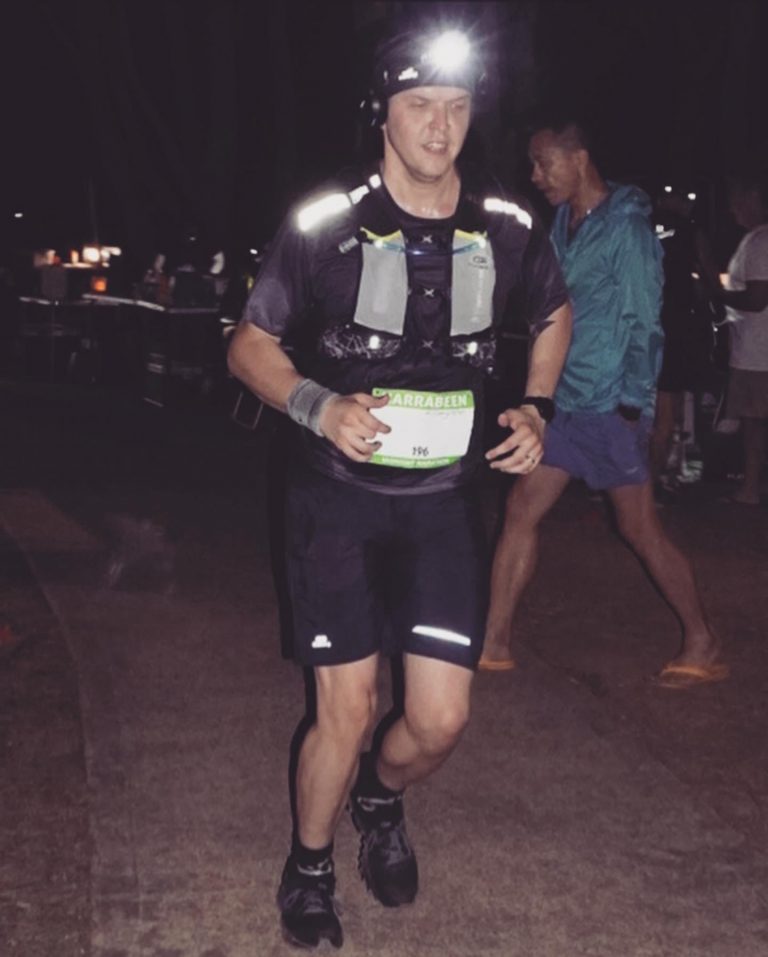If you suffer from back pain after your runs, then you’re not alone – running is an activity that involves repetitive impact and stress, and many people report feeling backaches after they’ve finished a running session.
Those who have an existing lower back problem can often find that running amplifies the pain or causes other kinds of pains, like leg pain and numbness. We are going to take a look at why exactly your back is aching after you run and what you can do about it going forward, so just keep reading.
What’s Causing Your Back Pain?
Often, running is not the primary cause of pain in the back felt after running. Research has found that professional athletes, competitive runners included, actually suffer from less back issues and pain than an average runner.
But running can make existing back pain symptoms worse, such as:
- Stabbing pain
- Aching muscles
- Pain or aches when lifting
- Pain when bending the back
Persistent or worsening back pain can be the result of an existing condition, with some of the most common being muscle strains, hyperlordosis, sprains, and herniated discs. Not wearing the correct shoes for running can sometimes cause back pain as well.
You should always get your pronation type checked at a running shoe store if you’re planning to amp up your running.
Muscle Sprains and Strains
Excessive physical activity, as you may already know, can cause the ligaments and muscles in your lower back to stretch beyond their limits and eventually tear. This causes severe pain, stiffness, and even muscle spasms.
Thankfully, treating muscle sprains and strains at home is quite simple and can be done through the following:
- Limiting your physical activity for several days, only exercising again after 2 – 3 weeks.
- Taking over-the-counter pain relievers.
- Applying ice to the affected area for 48 – 72 hours. Switching over to heat afterwards.
- Avoiding activities that require heavy lifting or twisting for 6 weeks from when the pain starts.
If your discomfort or pain is persistent after trying these treatments, we suggest you see your doctor so that they can help relieve your symptoms.
Hyperlordosis
Hyperlordosis, which is a form of unhealthy posture, is one of the most common causes of back pain. It is characterized by an excessive inward curvature of your spine in the lower back, causing your stomach to lean forward and your rear end to jut out. Looking at hyperlordosis in profile view will show an arch of the back in the shape of a C.
If you want to see if you have hyperlordosis, start by standing against a wall with your heels roughly 2 inches from the wall and your legs shoulder-width apart. With your shoulder blades, head, and rear end against the wall, place your hand between the curved section of your back and the wall.
If you’re able to fit more than a single hand in this space, you might have hyperlordosis.
Hyperlordosis is commonly caused by:
- Spinal injury
- Obesity
- Structural issues
- Rickets
- Neuromuscular diseases
Generally speaking, this condition does not require any medical treatment and can be treated at home by correcting your posture with exercises and stretches. If you visit your doctor about hyperlordosis, they might recommend physical therapy or a weight loss program.
Herniated or Degenerative Discs
As you grow older, the discs in your spine may begin to experience wear, which is called degenerative disc disease. The discs in your spine are responsible for absorbing the shock of physical activities, like jumping and running, so you might experience back pain when these discs start to weaken.
Herniated discs – also called ruptured or slipped discs – occur when the inside part of the spinal disc pushes through the external ring between the vertebrae. In the most serious of cases, this can cause permanent (and painful) nerve damage.
If it turns out that you do have a herniated disc, your doctor can provide you with treatments based on how severe your symptoms are.
A Simple Weak Back
A weakness of the lower back muscles can lead to a loss of control while you are running. However, when you have a weak back, you likely also have weakness in your abdominal muscles. Together, these weaknesses create a general vulnerability in your lower back that prevents you from controlling your muscle movement when you become tired during your runs.
This puts stress on the spine, which can cause pain during and after your runs. Physical therapy is often used to treat a weak back, and you should consult with your doctor if your weak back is interfering with your running.
Sacroiliac Joint Dysfunction
Your Sacroiliac joints are the two joints that sit at either side of the lower point of your back, right above your buttocks. They are easy to find since they sit next to the two pieces of bone in your lower back, and there are also two dimples on top of those joints, called the ‘Dimples of Venus’ (yes, that’s actually what they’re called).
If you tend to impact harder on one foot than the other, the excessive pressure that this causes can travel through one of your sacroiliac joints, irritating it and causing painful inflammation. However, it’s very rare that you will injure both joints at once.
Relieving Lower Back Pain – What to do
There are a couple of things that you can do to relieve your lower back pain. Not all of these methods will work for everyone, so be sure to give them all a try to find which one works best for you.
Here are some popular strategies for relieving lower back pain:
- Stretch your hamstrings, hip flexors, and calves regularly
- Perform the Child’s Pose, which is an excellent stretch for your lower back muscles that can take pressure off of the spine’s joints.
- Strengthen your glutes and hamstrings, as their support is invaluable for running and preventing running-related back injuries
- Try running with a lower back support belt for a while. This will act as a kind of ‘second set of muscles’ and can allow you to improve the integrity and strength of your actual muscles.
- Use gentle rowing exercises to strengthen your upper back. A strong upper back can relieve pressure from a weak lower back.
- Wear heating pads. They will keep you hot throughout the day, easing pain and promoting good blood circulation.
- Lie on your back with a tennis ball beneath your back in the most sensitive and tender areas. Do this for 30 seconds at a time before moving to a different sensitive area.
- Get sports massages regularly. The best massage therapists are able to relieve trigger points from your back while also giving your back a general muscle workout.
If you’re a more visual viewer, check out this informational video from Back Intelligence that talks about why back aches from running happen due to the form and motion:
Runner’s Lower Back Syndrome (RLBS)
RLBS is a common injury amongst runners. The following are signs that you should look out for when identifying this condition:
- Pain in your lower back while running that comes on while you are running.
- Tenderness and pain while running over your Dimples of Venus
- Pain that extends into the buttocks but not below the knee, without numbness or tingling in the legs
- A stiff and vulnerable back, especially (but not exclusively) while you are running
- Pain felt when leaning sideways or backward
Other Common Running Injuries
Running is not as safe of a sport as people may think, and there are a lot of injuries that you can cause to yourself when running. Let’s take a look at some of the most common runner’s injuries:
Achilles Tendinitis
Achilles Tendinitis is the inflammation of the Achilles tendon which connects your heel and your calf muscle. It can occur after you increase the intensity or distance of your running. If this condition is left untreated, you run the risk of rupturing your Achilles tendon, which would result in you needing surgery.
Hamstring Injuries
Your hamstrings are used to slow your leg down on the swinging phase of your stride. If you have weak or tight hamstrings, they could be more susceptible to injuries. Distance runners are more likely to experience hamstring injuries that come on slowly, caused by repeated tears in the connective tissue and fibers of the hamstrings.
IT Band Syndrome
The IT band, or iliotibial band, is the long connective tissue that runs from the knee to the outer portion of your hip and is responsible for stabilizing the knee when walking or running. IT band syndrome is the result of repetitive rubbing of the IT band against the bone in your leg and is extremely prevalent in runners.
Weak abdominals, glutes, or hips can contribute to this condition, which causes a sharp pain in the outer area of your leg, generally above the knee.
Wrapping Up
If you are a dedicated runner, then you should not think of your back pain as an abnormality. It is common amongst the average runner and can be caused by a myriad of things.
Be sure to practice safe and responsible running practices to ensure that your back and body are as healthy as possible. The last thing you want is to do permanent damage to your body while trying to be fit and healthy. Don’t overexert yourself, pace your training program and go up mileage in increments, don’t demand too much of your body in early stages.
Most of the time you might find that you have a weak back muscle, but you should always consult your healthcare physician before beginning any unfamiliar training activity. Especially if you’re increasing the intensity.

Marko Rakic is a trail runner and fitness enthusiast from Sydney, Australia. He is the lead writer for The Ultimate Primate and believes the best way to live a happy life is through constantly challenging yourself.
